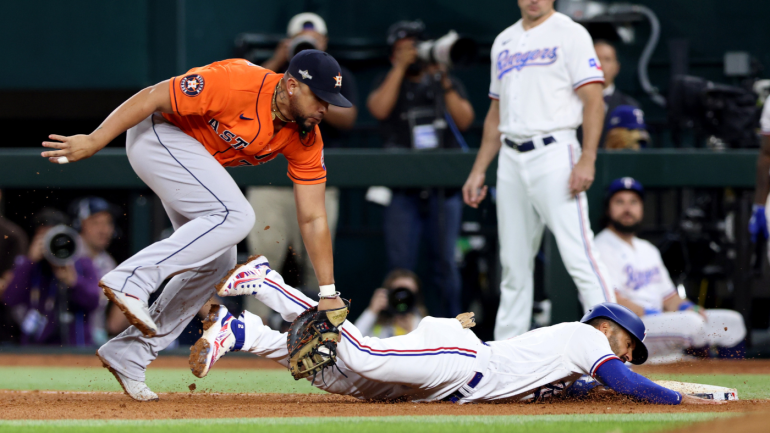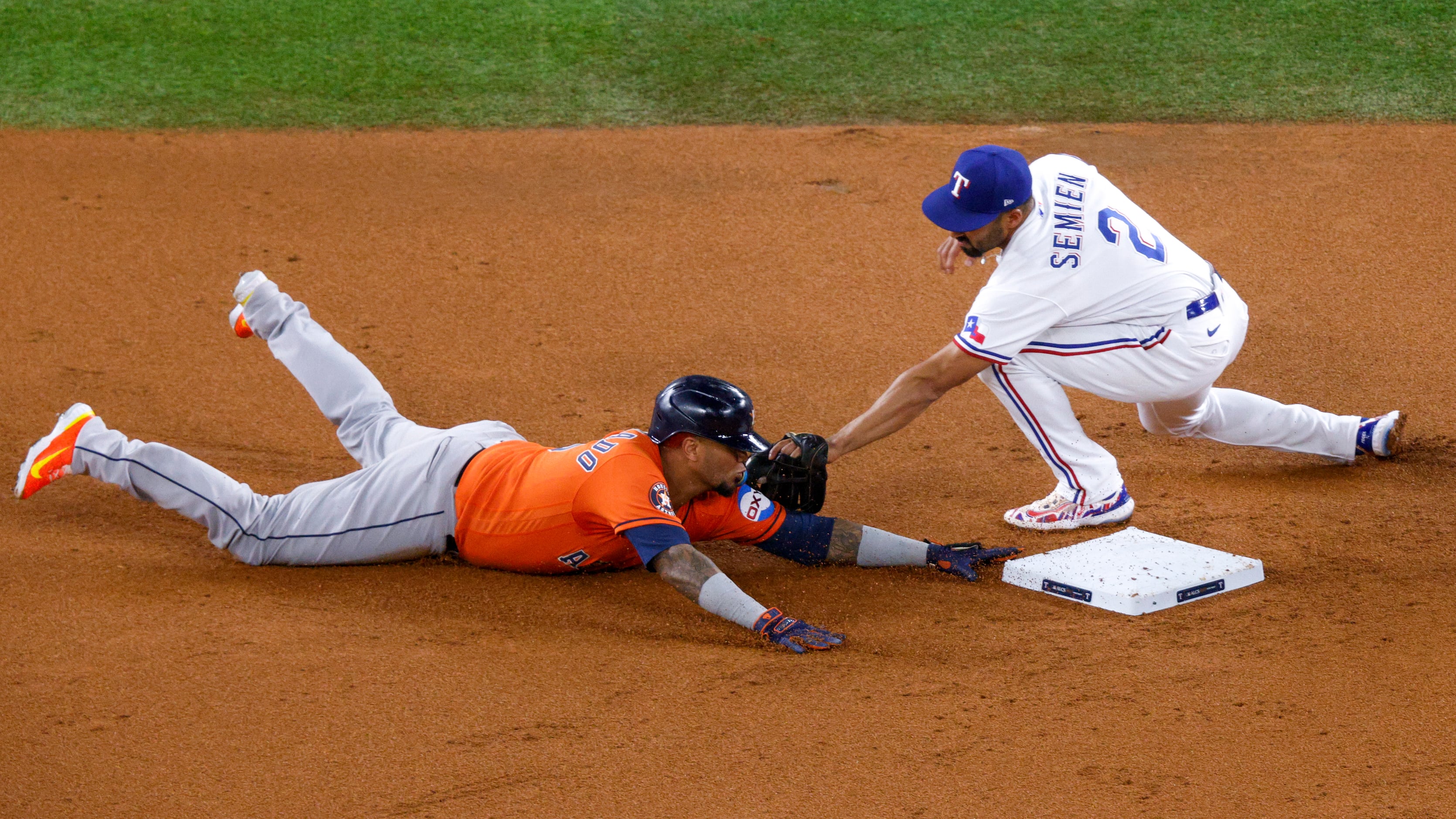Texas Rangers were down 7-3 against the Houston Astros in the bottom of the fifth inning of ALCS Game 4, but they were on the verge of a small comeback. Superstar shortstop Corey Seager was brought to the bat after Leody Taveras and Marcus Semien hit to start the inning. This time, Seager lined out after homering in his previous at-bat. After Semien slipped back to first base to try to evade José Abreu’s tag, replay review reversed the original ruling of safe at first base, and it turned out to be a double play.

Semien was tagged by Abreu. Kind of. It appears to be rather evident that he only had the batting glove protruding from Semien’s back pocket. Observe:
It is known that MLB has explained upon review that the strings hanging off a defender’s glove do not count and that the actual glove needs to touch the player for it to be a successful tag. We have seen athletes given first base when only their jersey gets hit by a pitch. A batting glove that is protruding from a pocket falls where?
It seems that it is equivalent to tagging the runner. If not, there would have been no overturning of the call.
Following the game, Semien remarked, “You want to get back on a liner.” I tried to straighten up after realizing I was slanting a little. Simply unlucky.”
The official MLB rulebook has two definitions that are the closest to helping us figure this one out.
/cdn.vox-cdn.com/uploads/chorus_image/image/71477025/1243735409.0.jpg)
Fielders can touch a base with their body while holding the ball firmly and securely in their glove or hand, or they can touch a runner with the ball while holding it in their glove or hand (but not with hanging laces alone). This is known as a TAG. If the fielder drops the ball concurrently or right after contacting a base or runner, that is not considered a tag. The fielder must retain the ball long enough to demonstrate that he has total possession of it in order to validate the tag. In the event when the fielder makes a tag and then drops the ball while throwing after the tag, the tag is considered made. For the purposes of this definition, a player’s jewelry (such as bracelets, necklaces, etc.) does not count as a part of their body.
CARESSE. Any portion of a player’s body, as well as any clothing or equipment they are wearing, may be touched by an umpire or player; jewelry (such as necklaces, bracelets, etc.) worn by a player is not permitted. (Touch) Comment: If equipment is in contact with its appropriate location on a player’s or umpire’s person, it is deemed to be worn by them.
Take note of the parenthesis stating that the glove’s laces are not counted. In response to certain highly contentious replay overturns, that addition was made in 2016. It’s evident that jewelry is irrelevant, but a batting glove isn’t jewelry either. It’s not his uniform, either. It’s equipment, but it’s not being worn when it’s in his pocket.

This is where things get confusing, and MLB should probably make this clear: Pay attention to the final observation in the “touch” area. In particular, equipment that is in contact with its designated location on a player’s or umpire’s person is considered worn by them.
That was a batting glove, and a player’s hands are supposed to be the spot it is worn on their body. Isn’t a batting glove not being worn if it’s not on his hands? The counterargument, I suppose, would be that Semien meant to carry the batting gloves in his back pocket, thus in a way they are worn.
Major League Baseball will undoubtedly contact us on this, and even though it may seem unimportant, you can bet there will be consequences. You can be certain that players won’t be as careless about leaving their batting gloves in their pockets in crucial situations.